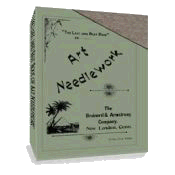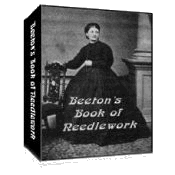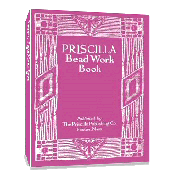[]Subscribe To This Site
VICTORIAN CUSHIONS
Victorian cushions are the perfect item to use to add that “special touch” to your room. The various sizes, shapes and materials used during Victorian times were enormous. Some were practical and others were for decoration only.
Here is an edited version of information authored by Elizabeth Glaister, 1880 about her thoughts on the use and making of cushions.
Cushions
By Elizabeth Glaister, 1880(Edited)
Cushions, being less closely connected with the permanent decoration of the room, allow great liberty of treatment and choice of style. Indeed, provided they are beautiful in themselves, their style is not of much moment; and a piece of rare Eastern needlework is peculiarly appropriate for a cushion, and not out of place with any style of decoration.
A cushion should both look and be soft, and it is better for it to be large enough to rest shoulders as well as head, and it should only be put where it is likely to be used and it is possible to use it. The material should be soft or fine, and the pattern must not do away with the feeling of rest. A diaper of small leaves and flowers, or little trailing patterns of flowers, or a powdering of small sprigs will be pretty for cushions. If a large flower be used, it must be restfully treated, and then it will look very well; for instance, like the flower illustrated below.

Click on picture to see more detail.
We have seen large sofa pillows covered with work of the last century which looked cool and inviting for summer rest — fine unbleached linen, embroidered with little bouquets of various sizes in divers colored silks. These had gone through many a washing, looking softer and better for it, indeed some of our readers may be shocked to hear that much of their work will be greatly the better for washing. All the beautiful class of work done with silk on linen owes much of its merit in the eyes of artists to the softening and harmonizing effect of repeated washing. Honest washing, of course, by careful hands, in pure water and lather of pure soap; not torture of machines and burning of bleaching liquids. There must be no starch, and only a very distant and respectful iron; better than that, let the work be pinned out to dry, straight and tight, on a sheet spread upon a fixed carpet. Fabrics of undyed waste silk embroidered with filosel are also improved by this treatment.
A pretty and useful cushion is made of fine brown or white linen, with a slight design, or pair of designs, such as an ornamented square, or a spray of flowers in outline, lightly worked for the two sides: a running pattern in the same colored silk is worked on a strip of linen three or four inches wide, which is sewn insertion-wise between the front and back of the cushion. Bold pillow lace, tape guipure, or better still, cut-work —commonly called Greek lace —may be substituted for the embroidered insertion, indeed it will be handsomer; in this case the pillow must be lined with silk of the same color as the embroidery.
This kind of cushion has front and back alike, but most of those we have named require a back or reverse. Silk is the best for this purpose; it must harmonize with the ground or with the embroidery on the front of the cushion. If the main color of the embroidery be much lighter than the ground, the back will look best if nearly of the color of the latter. Rather a fine silken cord makes the best finish; it must not be obtrusive, and tassels are best altogether avoided.
For more on Victorian cushions or pillows, PLUS FREE Victorian Pillow Cover directions, see
(make link to Victorian Pillow page: https://victorian-embroidery-and-crafts.com/victorian_pillow.html )
Return to top of page.



 433 pages!
433 pages!

